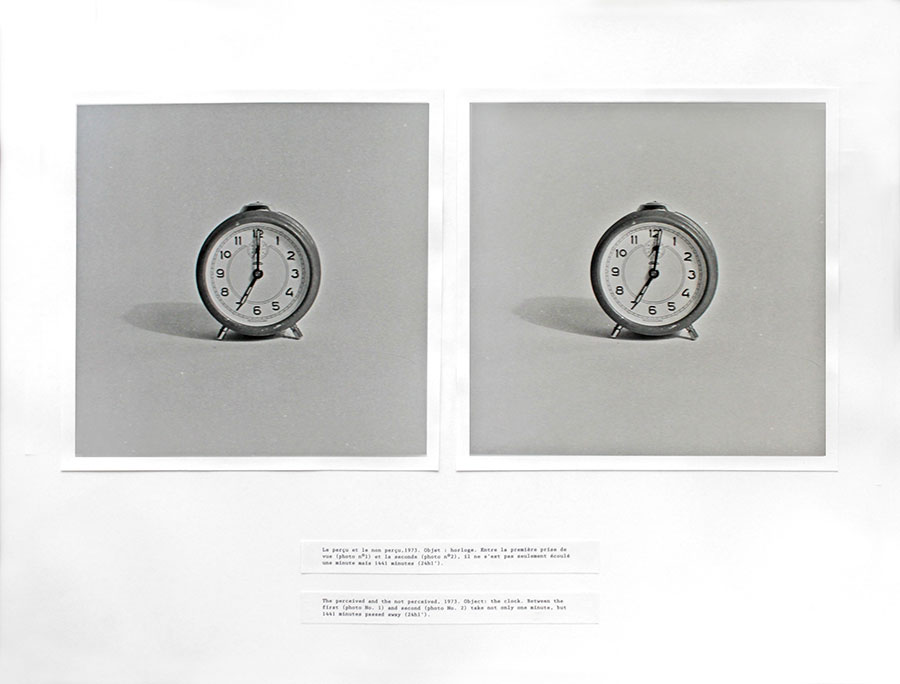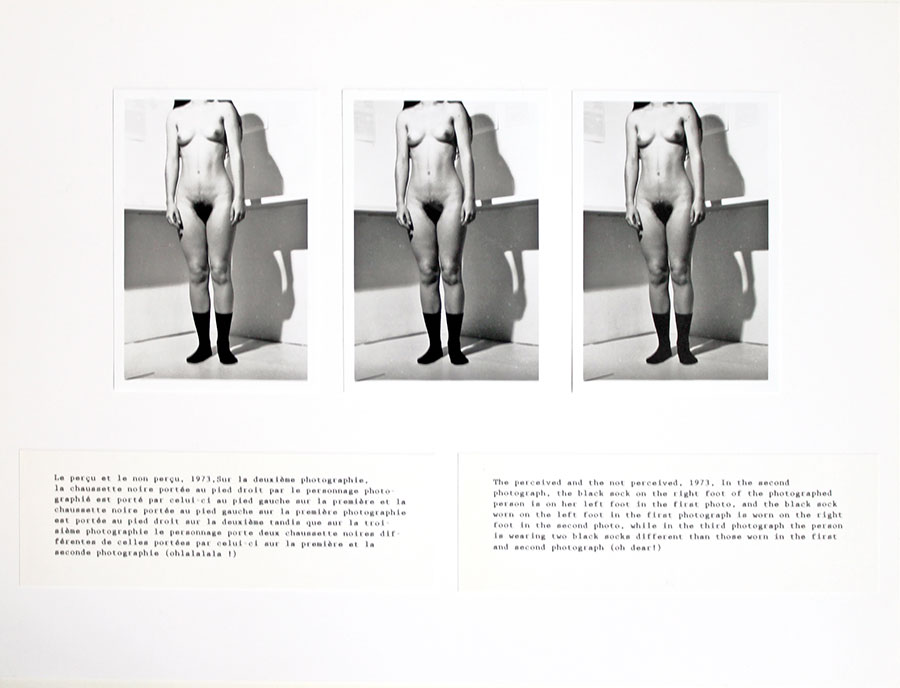Jacques Lizène participe à l’exposition « The importance of being », un panorama de l’art contemporain en Belgique au travers des oeuvres de quarante artistes, une exposition conçue par la curatrice Sarah Alonso Gomez, qui sera successivement accueillie par les musées de La Havane, de Buenos Aires, de Rio de Janeiro et de Sao Paulo.
Première étape au Museo Nacional de Bellas Artes, La Habana, Cuba, du 13 février au 26 avril.
Gathering 40 international artists, the exhibition “The Importance of Being …” will travel to 4 important museums in Latin America along one year and a half, offering a vast panorama of the contemporary art scene in Belgium, without intending to encompass thoroughly. Plural discourses and transversal approaches through a wide range of artistic supports make possible to highlight nowadays crucial problematics worldwide in order to think on possible connections with other latitudes while mapping similarities and differences.
The goal has been to go beyond the notion of Belgium. It is a departure point as laboratory/platform with specific but also global cultural dynamics and geopolitical approaches, in the center of Europe on the decision-making and towards the rest of the world. In this sense, subjects related to power and memory, to the binomial identity-alterity, conflicts and borders, human relations with both the technosphere and biosphere in the context of the globalization are developed on the exhibition. In this sense, the exhibition proposes 5 conceptual trends establishing a strong thread between the selected artworks.
In parallel to the show, a program of performances, workshops with local art schools, conferences and panels of discussion will take place along the exhibition. The first venue will be Museo Nacional de Bellas Artes in Havana as from February 13th this year.
Artists: Marcel Broodthaers, Chantal Akerman, Francis Alÿs, Charif Benhelima, Guillaume Bijl, Michaël Borremans, Dirk Braeckman, Jacques Charlier, David Claerbout, Leo Copers, Patrick Corillon, Cel Crabeels, Berlinde De Bruyckere, Jan De Cock, Peter de Cupere, Carl De Keyzer, Raoul De Keyser, Edith Dekyndt, Wim Delvoye, Fred Eerdekens, Jan Fabre, Michel François, Kendell Geers, Johan Grimonprez, Ann Veronica Janssens, Marie-Jo Lafontaine, Jacques Lizène, Kris Martin, Hans Op de Beeck, Walter Swennen, Pascale Marthine Tayou, Ana Torfs, Joëlle Tuerlinckx, Philippe Vandenberg, Koen van den Broek, Anne-Mie Van Kerckhoven, Koen Vanmechelen, Lieve Van Stappen, Bruno Vekemans, Angel Vergara Santiago.
Curator: Sara Alonso Gómez
Director: Bruno DevosDates:
Museo Nacional de Bellas Artes, La Habana, Cuba: February 13th to April 26th 2015
Museo de Arte Contemporáneo, Buenos Aires, Argentina: July 4th to September 12th 2015
Museu de Arte Moderna, Rio de Janeiro, Brasil: December 2nd 2015 to February 14th 2016
Museu de Arte Contemporânea da Universidade de São Paulo, Brasil: April 11th to July 14th 2016
Sara Alonso Gómez is curator and art critic on contemporary art, graduated from Art History at the University of Havana and from a Master on Curating Contemporary Art at Paris-Sorbonne. As member of the Cuban Writers and Artists’ Union (UNEAC), she focuses on the contemporary art challenges in its trans-disciplinary nature and process. Having worked at Ludwig Foundation of Cuba during five years, she collaborates today with Uprising Art, a platform for the promotion of the Caribbean Contemporary Art; with Centre Pompidou in Paris at Service of Nouveaux Média; and with Artui in Belgium directed by Bruno Devos for developing trans-global artistic projects. Her publications can be found in specialized catalogues and magazines.
Jacques Lizène y montre une sélection d’une dizaine de ses perçus – non perçus
Jacques Lizène
Le perçu et le non perçu, 2 photographies NB, tirages argentiques, 65 x 50 cm, 1973.
« Objet : horloge. Entre la première prise de vue (photo n°1) et la seconde (photo n°2), il ne s’est pas seulement écoulé une minute mais 1441 minutes (24h1’) ».
[…] Lizène used the medium of photography to supply either a commentary on, or subversion of, traditional genres such as portraiture, still life, or street photography. He realized this through the notion of the mediocre, an approach that is in line with contemporary photo conceptual art as analyzed by Jeff Wall in his classic essay, ‘Marks of Indifference: Aspects of Photography in, or as, Conceptual Art ‘ (1995). Lizène, however, went further than his contemporaries. Not only is his work- certainly his photographic work- characterized by a certain ‘deskilling’ and ‘visual banality,’ to use Wall’s terms, he also identified him self as the ultimate mediocre artist. In 1970 he defined him self as the ‘Minor, late mid -twentieth-century Master of Liege, Artist of the Mediocre and Unimportant‘. In essence, Lizène used mediocrity as a means to claim the artistic value of an object or an idea that is not typically considered as praiseworthy. With this strategy of mediocrity – a deliberate refusal to make ‘high art’ – Lizène, in fact, continued the Surrealist methodology that had been most ‘purely’ adopted by Marcel Mariën.
In 1972 and 1973 Jacques Lizène created a series of photographic works entitled the Perceived and the Not-Perceived [Le Perçu et le Non Perçu] in which the photographic mechanism is shown, analyzed, and questioned in a light, humorous way. The series starts with a selfportrait entitled the Minor Master from Liege Pressing his Nose against the Surface of the Photograph. In ‘The Quick and Incomplete Autobiography, by Lizène Himself’ (1990) the artist asserted that ‘the surface of the photo was actually a window’ and thus, he qualified the image as ‘a mediocre joke ‘ This silly statement, nevertheless, makes the viewer conscious of the camera lens as a screen that separates the photograph from reality. Lizène’s remark also reminds the viewer of the fact that what is shown is not reality but an (indexical) image of reality.
Most of the other works that are part of the series the Perceived and the Not Perceived were based upon the idea of reproducibility, a fundamental characteristic of the photographic medium. In each work a series of photographs – with exactly or nearly the same images -is combined with a caption suggesting that the images differ but in a way that is ‘unperceivable.’ One of the works included in the series is: In the second photo the black sock worn on the subjects right foot is worn on the subjects left foot in the first photo, whereas in the third photo the subject wears two completely different socks.
In this series the photographs alone cannot make the meaning of the artwork clear; words are required, therefore, in order to communicate the content that the artist intended. The combination of a series of images and a text in the form of a caption is a strategy that is often used within the discourse of Conceptual art. Take, for example, John Baldessari’s The Back of All the Trucks Passed While Driving from Los Angeles to Santa Barbara, California, Sunday 20 January 1963, which consists of picture s of, indeed, the back of trucks. The caption of this work (drily) describes what is seen in the pictures. By contrast, Lizène’s works that form the series The Perceived and the Not-Perceived challenge the relation between what is read and what is seen. This approach recalls the subverted image-text relation found in the work of Rene Magritte, such as The Treachery of Images [La Trahison des Images] (1929). In addition, Lizène affirmed in an interview his appreciation for Magritte and especially ‘his particularly modern way of interrogating the image’. […] As a matter of fact, Lizène remarked ‘ [that] on August 28, 1990, he realized he was one of the inventors of the « comic conceptualism » of the early 1970s.’Liesbeth Decan, Conceptual Art and Surrealism: an Exceptional, Belgian Liaison in
Mieke Beyen (dir), Minor Photography. Connecting Deleuze and Guattari to Photography Theory, Lieven Gevaert Series, Leuven University Press, 2014.
Jacques Lizène
Sur la deuxième photographie, la chaussette noire portée au pied droit par le personnage photographié est porté par celui-ci au pied gauche sur la première et la chaussette noire portée au pied gauche sur la première photographie est portée au pied droit sur la deuxième tandis que sur la troisième photographie le personnage porte deux chaussette noires différentes de celles portées par celui-ci sur la première et la seconde photographie (ohlalalala !). Le perçu et le non perçu, 3 photographies N.B, tirages argentiques, 1973. Photographies N.B, tirage argentique, texte imprimé. 30 x 40 cm. 1973-2011.
[sociallinkz]

